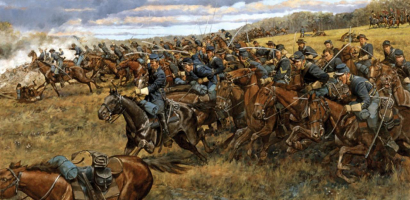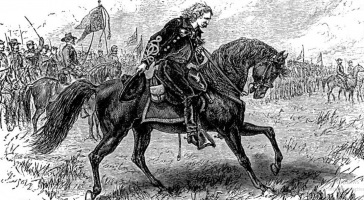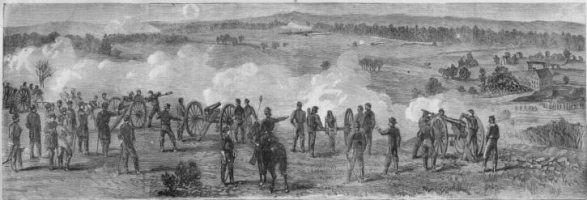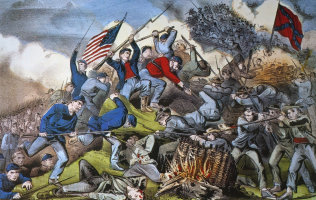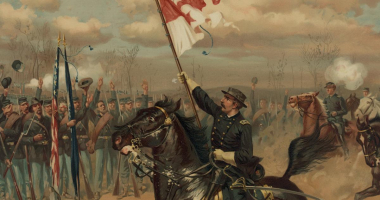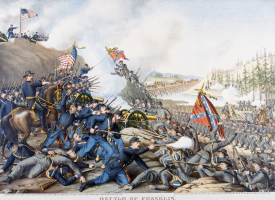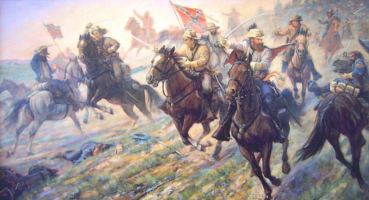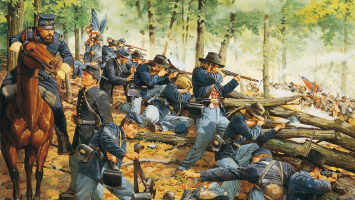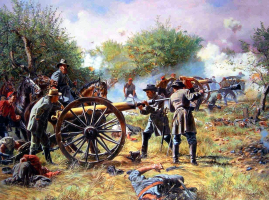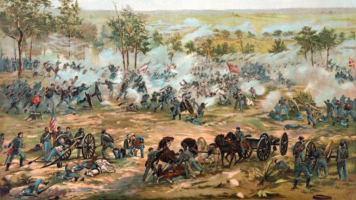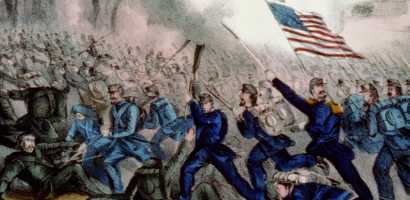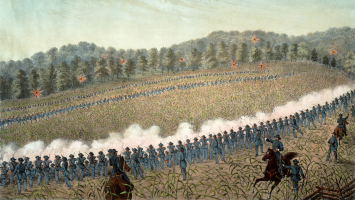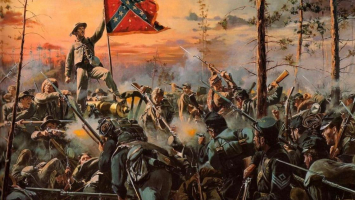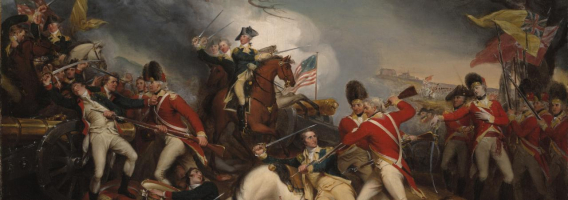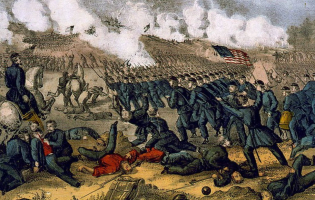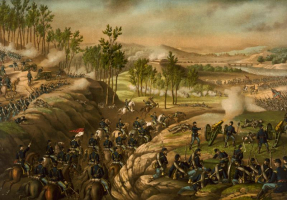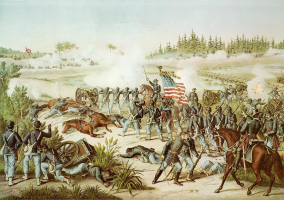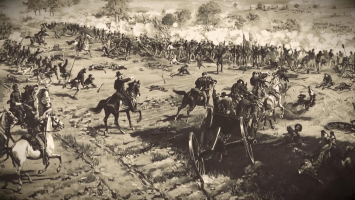Top 8 Facts About The Battle of Ball's Bluff
The Battle of Ball's Bluff was an early battle of the American Civil War fought in Loudoun County, Virginia, on October 21, 1861, in which Union Army forces ... read more...under Major General George B. McClellan suffered a humiliating defeat. Initially, a small raid turned instead into a military disaster known as the Battle of Ball's Bluff, which resulted in the death of a prominent US senator, and the capture and imprisonment of General Stone and established a congressional oversight committee to keep senior Confederate commanders looking over their shoulder for the remainder of the war. Check out this list of facts about the Battle of Ball's Bluff to further your understanding of the battle.
-
The Battle of Ball's Bluff was the result of a slight demonstration. Three months after the Battle of Bull Run, Confederate and Confederate armies occupied a relatively stagnant front along the Potomac River. On the Virginia side of the river, Colonel Nathan "Shanks" Evans, commanding less than 3,000 men, grew increasingly concerned about being surrounded by the growing number of Confederate troops gathered across the river. A small skirmish in the direction of Harper's Ferry on October 16, 1861, only increased Evans' fears and caused the Confederacy to abandon his position at Leesburg.
For this slight demonstration, the opposite of Evans is Brig. General Charles P. Stone's Observation Corps, whose main task was to monitor Confederate activities. When Stone's men reported Evans' retreat, Major General George B. McClellan gave orders to the Brig division. General George McCall headed for the Edwards Ferry, but the cautious McClellan quickly rescinded the order. At the same time, McClellan ordered Stone to perform a "slight demonstration" —to ascertain Confederate intentions — along the Potomac on October 20. Meanwhile, at the behest of General PGT Beauregard, Evans was returned to Leesburg, setting the stage for the ensuing battle. Therefore, the Battle of Ball's Bluff as a result of a slight demonstration is one of the facts about the Battle of Ball's Bluff that brings many surprises to those who are learning about this battle.
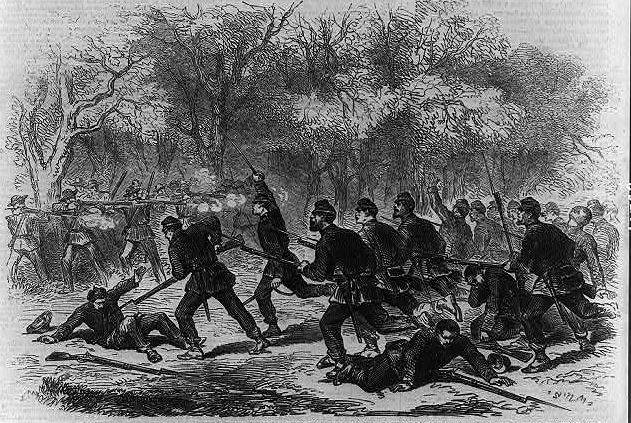
Source: battlefields.org 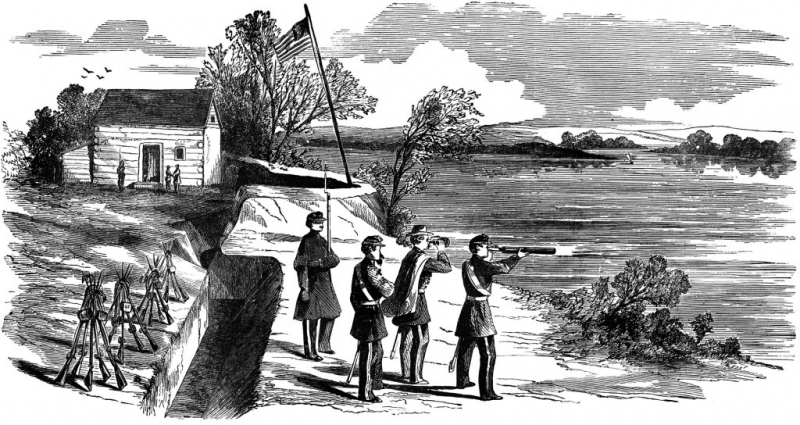
Source: visitloudoun.org -
The Union Army crossed the Potomac River based on faulty intelligence. The Battle of Ball's Bluff was an accident. Fought on October 21, 1861, and long thought to have been a deliberate but bungled Union attempt to take Leesburg, it actually evolved from a faulty intelligence report provided by an inexperienced Union officer. And this becomes one of the facts about the Battle of Ball's Bluff.
Regarding this faulty intelligence, after Stone's small demonstration failed to attract Confederate attention, Stone ordered a reconnaissance group to cross the Potomac at Ball's Bluff to obtain more information on Confederate positions. Leading a company of the 15th Massachusetts, Captain Chase Philbrick crossed the river after dusk on October 20 with orders to scout as far as he could towards Leesburg until he saw something that aroused suspicion. Less than a mile from the riverbank, Philbrick saw what he believed to be a row of tents in the dim moonlight. The captain approached within 150 feet of the mock camp and realized that it appeared to be deserted, with no Confederate troops or campfires in sight. With his suspicions raised enough, the inexperienced and over-excited Philbrick returned to his superiors, not investigating the matter further. Upon hearing this report, Stone ordered Colonel Charles Devens and a raiding party of 300 men to cross the river and attack the camp. As dawn broke on the 21st, Devens realized that the "camp" he was after was nothing more than a row of trees - a trick of moonlight that fooled Philbrick into overdrive. Having received orders to wait for reinforcements and move towards Leesburg, Devens' men encountered predators from the 17th Mississippi and the skirmish commenced.

Source: armyhistory.org 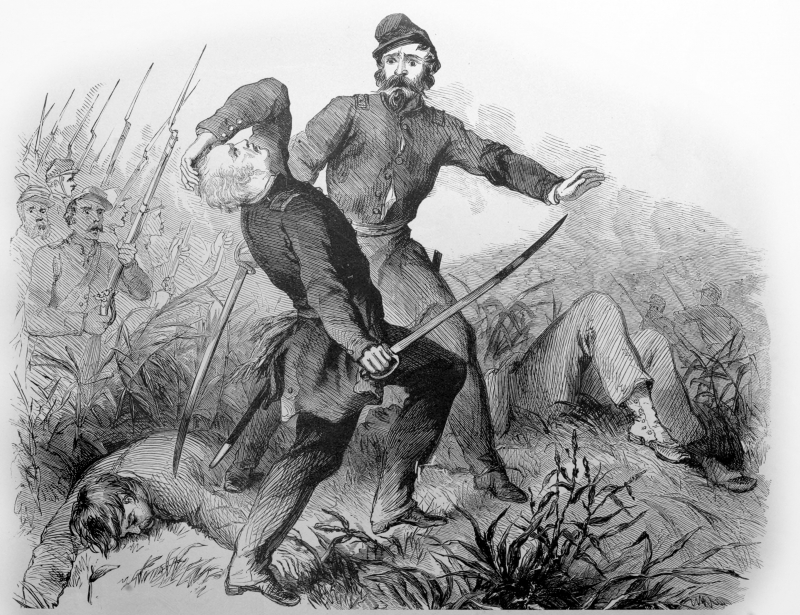
Source: armyhistory.org -
Inexperience, rough terrain, and a lack of ships led to a military disaster. According to statistics, forty-nine Confederate soldiers were killed at Ball's Bluff, and dozens more drowned trying to flee. Hundreds more are listed as injured, arrested, or missing. Among them was a former US Senator from Oregon, and Abraham Lincoln's friend, COL Baker. If Baker survived this battle, it would only be a footnote to Civil War history. Instead, his death turned this minor failure into a major controversy that ignited contemporaries and has captivated historians ever since. With great losses, this has become an indispensable fact in the list of facts about the Battle of Ball's Bluff.
The military disaster began as an attempt to raid an unprotected Confederate barracks that ended in an embarrassing Confederate defeat. Not only was the raid based on fake intelligence gathered by an inexperienced officer, but communication between Union officers throughout the battle was also ineffective. Ball's Bluff's terrain itself presents a forbidden challenge. Made up of steep, wooded cliffs bordering the Potomac River, the Confederates fought against the river and were unable to gain good ground. To complicate matters further, there were only four small boats available at Harrison Island, and Confederate reinforcements arriving at Ball's Bluff were slow and few. In the end, Evans' troops forced the Yankees unscathed and literally into the Potomac River. Here again, the shortage of boats took its toll on the Federation. Those who did not surrender would have to swim through, and many drowned in the attempt. The staggering disparity in casualties made the Confederacy's defeat all the more resounding. Confederate troops suffered more than 1,000 casualties, while the Confederates lost less than 160.
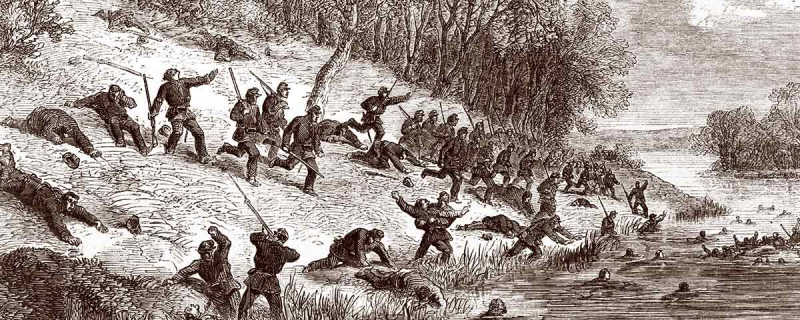
Source: ushistoryimages.com 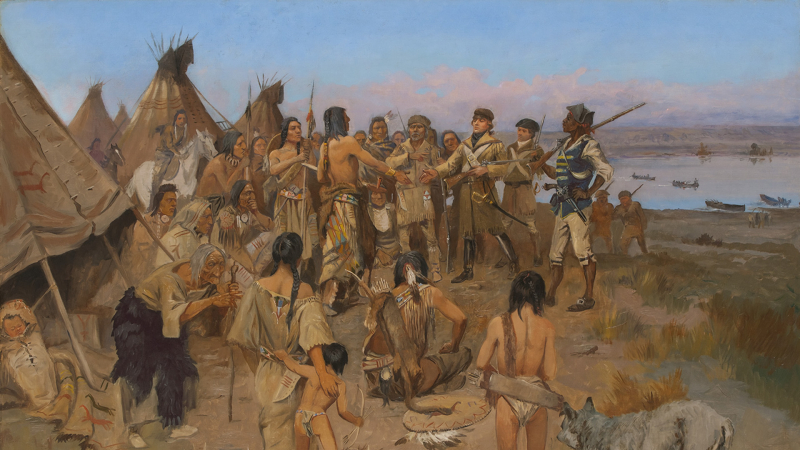
Source: historynet.com -
Ball's Bluff was the first major battle of the famous California Regiment. Edward Baker spent much of the 1850s in California and was identified with that state by the public. When the war broke out, however, he was in Washington as a senator not from California but from Oregon. The recruitment effort had some success, but Baker had to return to his senatorial duties in Washington. He contacted a former California law partner then living in Philadelphia, Isaac Wistar, and suggested he take over the regiment's organization. Wistar agrees but wants to do it in Philadelphia instead of New York. With Baker's approval, he began work, and it was so successful that the single regiment was proposed to become four regiments collectively known as the California Regiment.
The California Regiment is sponsored by Californians as part of an effort to keep California in the Union by encouraging California men from across the United States to enlist in the regiment. The regiment, however, was nominally only Californians; not only was it commanded by Colonel Baker, a Senator from Oregon, but the regiment was raised in Philadelphia, resulting in a regiment whose men were mostly Native Pennsylvanians. After Baker's death, the regiment was renamed the 71st Pennsylvania Volunteer Force and resumed action at Antietam, Fredericksburg, and Gettysburg, where they participated in the famous repulsion of Pickett's Charge at the Bloody Angle. California Regiment deserves to be one of the facts about the Battle of Ball's Bluff.
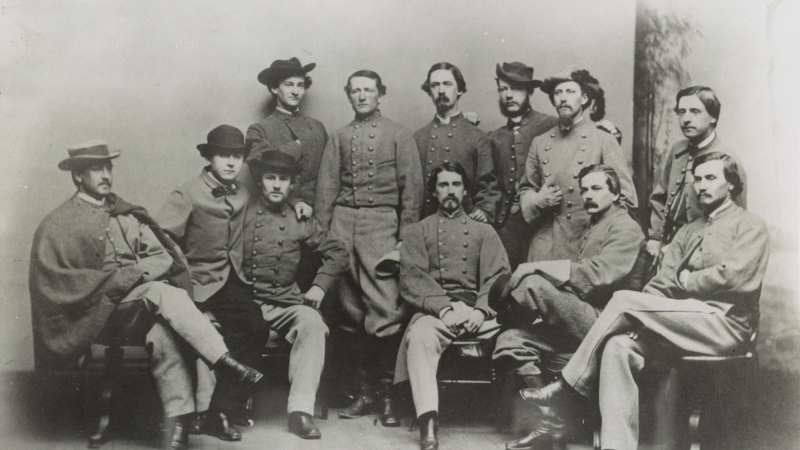
Source: warfarehistorynetwork.com 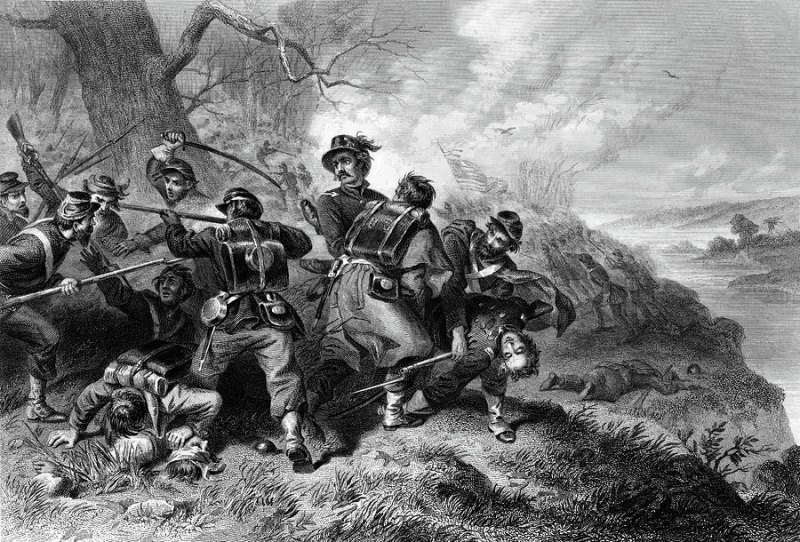
Source: warfarehistorynetwork.com -
Future Supreme Court Justice Oliver Wendell Holmes Jr. survived a near-fatal wound at Ball's Bluff. Oliver Wendell Holmes Jr. was a prominent American jurist who is among the most cited US Supreme court justices. He was a legal historian and philosopher who encouraged judicial restraint. He advocated the concept of “clear and present danger” as the basis for limiting free speech. Also known as 'The Great Dissenter,' he served as an 'Associate Justice of the U.S. Supreme Court from 1902 to 1932, and 'Acting Chief Justice of the United States from January to February 1930. Oliver Wendell Holmes twice escaped death as a young Union officer in the Civil War when musket balls missed his heart and spinal cord by a fraction of an inch at the Battles of Ball's Bluff and Antietam. He lived ever after with unwavering moral courage, unremitting scorn for dogma, and an insatiable intellectual curiosity. Named to the Supreme Court by Theodore Roosevelt at age sixty-one, he served for nearly three decades, writing a series of famous, eloquent, and often dissenting opinions that would prove prophetic in securing speech, protecting the rights of criminal defendants, and ending the Court's reactionary resistance to social and economic.
Shortly after graduating from Harvard University, Oliver Wendell Holmes Jr. secured an assignment as a Lieutenant in the 20th Massachusetts Volunteer Army. Holmes and his fellow officers in the 20th Massachusetts were Harvard graduates and close friends, and the regiment later became known as the "Harvard Regiment". Holmes suffered his first serious injury in the fighting at Ball's Bluff - the first engagement of the 20th Massachusetts. Holmes' regiment accompanied Devens across the Potomac and arrived on the morning of October 21. At about 4 o'clock. 30 minutes into the afternoon, Holmes was shot in the chest, a near-fatal wound. Holmes recovered, only to be wounded later at Antietam and again at Chancellorsville. Holmes went on to serve as one of America's most influential and longest-serving Supreme Court Justices, holding a seat until the age of 90. His miraculous survival became one of the facts about the Battle of Ball's Bluff.
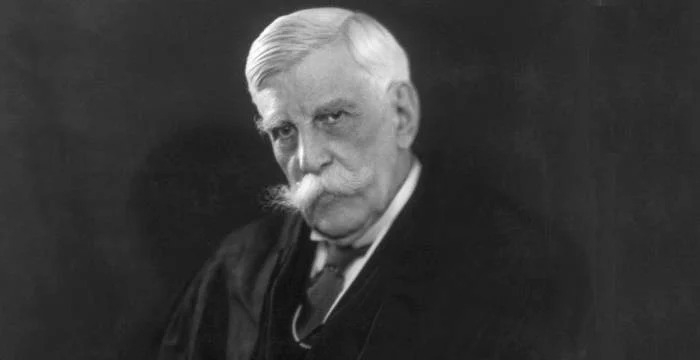
Source: thefamouspeople.com 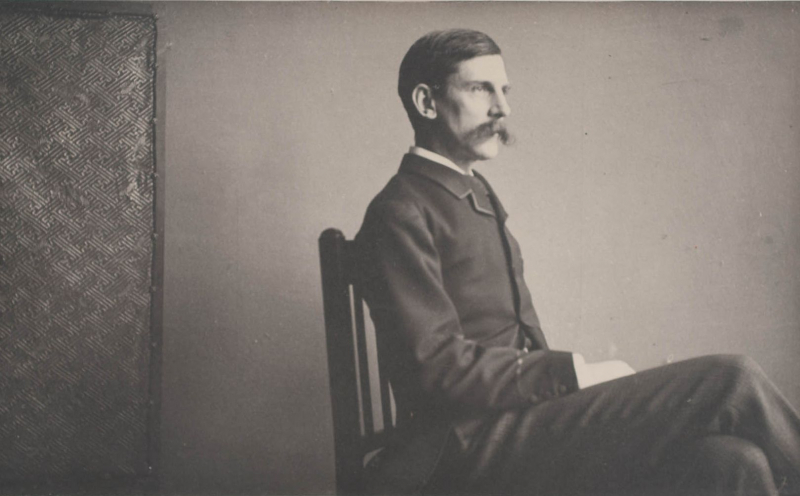
Source: masshist.org -
The Battle of Ball's Bluff resulted in the creation of the Joint Committee on the Conduct of War. On October 21, 1861, Union troops suffered a devastating defeat in the second major engagement of the Civil War. The Battle of Ball's Bluff in Virginia produced the war's first martyr and led to the creation of a Congressional committee to monitor the conduct of the war. The Joint Committee was created in December 1861 following the Federal disaster at Ball's Bluff and during its four years of existence evaluated a variety of war-related activities and enterprises. The Joint Committee on the Conduct of War appeared as one of the facts about the Battle of Ball's Bluff.
The ensuing outcry, and a desire to learn why Federal forces had lost battles at Bull Run (Manassas), Wilson's Creek, and Ball's Bluff, led to the establishment of the Joint Committee on the Conduct of the War, which would bedevil Union officers for the remainder of the war (particularly those who were Democrats) and contribute to nasty political infighting among the generals in the high command. After the embarrassing defeat at Ball's Bluff, the Confederacy's third major defeat of the war, Congressional Republicans understood enough of what they perceived to be the incompetence of the officers Lincoln had appointed and determined to play a greater role in waging the war. On December 9, 1861, they formed the Joint Committee on the Conduct of War to oversee the conduct of the Army and Navy. During the war, the Committee was chaired by a Radical Republican Senator from Ohio, Benjamin Wade. The Radical Republicans wanted to pursue a more active war line than President Lincoln and used the Commission to oversee generals and promote those they believed would support tough war policies.
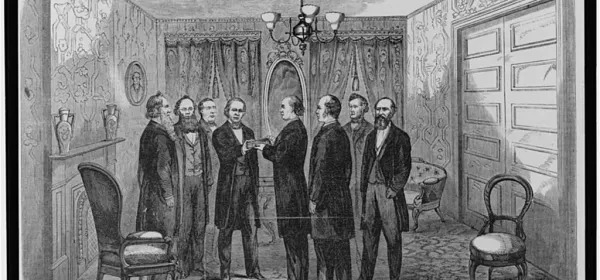
Source: senate.gov 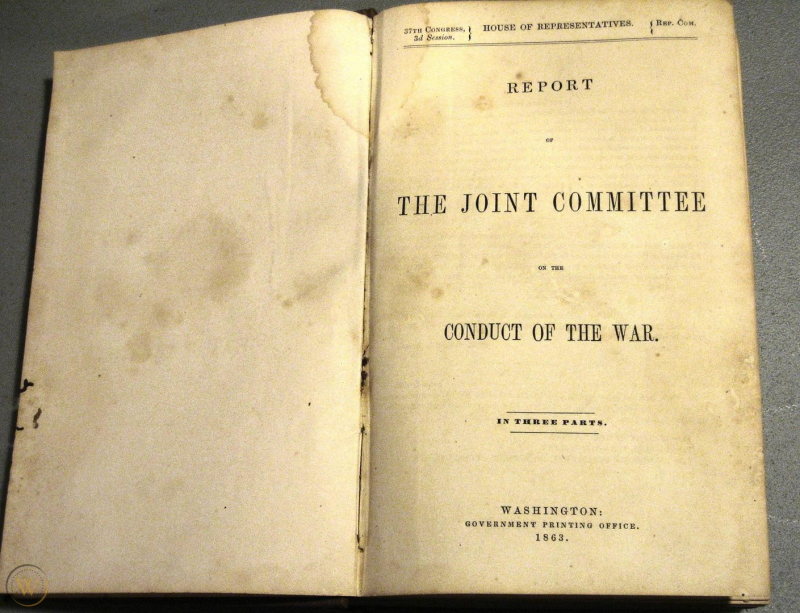
Source: senate.gov -
Both Stone and McClellan blamed Colonel Edward Baker for the great loss of the Union. Col. Edward Baker, a U.S. Senator, decided to reinforce Devens, but with only four small boats available to transport men, Union reinforcements arrived slowly. Evans used the Federal delay to organize his men, and when Col. Baker was killed in the afternoon, Union resistance crumbled. This is considered an event that cannot fail to be mentioned in the list of facts about the Battle of Ball's Bluff.
When called before the Joint Committee on the Conduct of War, Stone testified that he had assigned Col. Edward Baker was responsible for deciding whether to send more troops across the river or withdraw those already there. By sending reinforcements, Stone argued that Colonel Baker chose to wage a battle. General McClellan was inclined to agree. After hearing Stone's version of events, McClellan publicly cleared Stone of all blame and announced in a military statement that the disaster was the fault of the Direct Commander. Although Stone and McClellan both testified that Baker mismanaged his orders during the battle, Stone remained a popular scapegoat for the battle's defeat. When Stone was called before the Joint Committee to deliver his version of the events at Ball's Bluff, Congress blamed the battle on Stone.
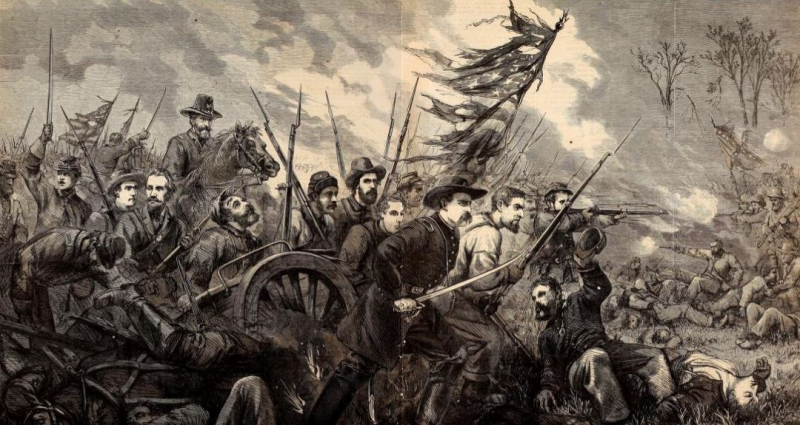
Source: ehistory.osu.edu Source: Youtube - The Battle of Ball's Bluff - 160th Anniversary Battle Walk -
The Battle of Ball's Bluff has been called a preservation success story by historian Jim Morgan. The Northern Virginia Regional Park Authority currently controls 223 acres of the original battlefield, including all key areas. Together with Ball's Bluff National Cemetery, this landforms Ball's Bluff Battlefield Regional Park. Irregular working days by a team of volunteer guides (one of which is held annually as part of CWPT's Parks Day) and the dynamic leadership of the park's curator, George Tabb, helped clear up an overgrown meadow, restored a part of 1861, and made interpretation and understanding much easier. Of course, this is one of the facts about the Battle of Ball's Bluff.
Regarding the preservation success story, despite the fact that the site of the fighting in the early morning of October 21 was lost to development, part of the battlefield is still well preserved to this day. The Northern Virginia Regional Parks Authority (NOVA Parks) owns 223 acres of the original battlefield along with Ball's Bluff Battlefield National Cemetery, all of which became Ball's Bluff Battlefield Regional Park. NOVA Parks cleared trees to give the battlefield the same look as it did some 158 years ago, and new enhancements, including interpretive trails, guided tours, and updated signage have made Ball's Bluff an important conservation site. Additionally, Ball's Bluff Battlefield Park began its annual battle commemoration practice in October by hosting battlefield lighting activities. In 1984, the US Department of the Interior designated 76 acres around the battlefield as a National Historic Landmark. In 2017, the boundaries of that landmark designation were expanded to include more than 3,300 acres of riverfront land on both sides of the Potomac River and to include Harrison Island, Maryland.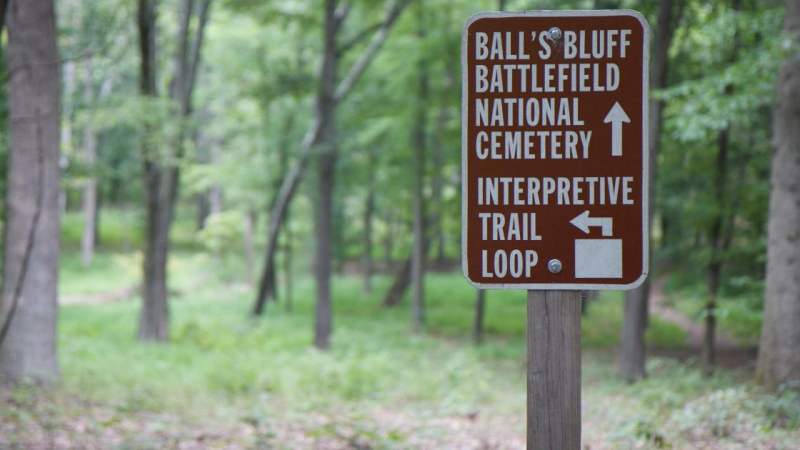
Source: armyhistory.org 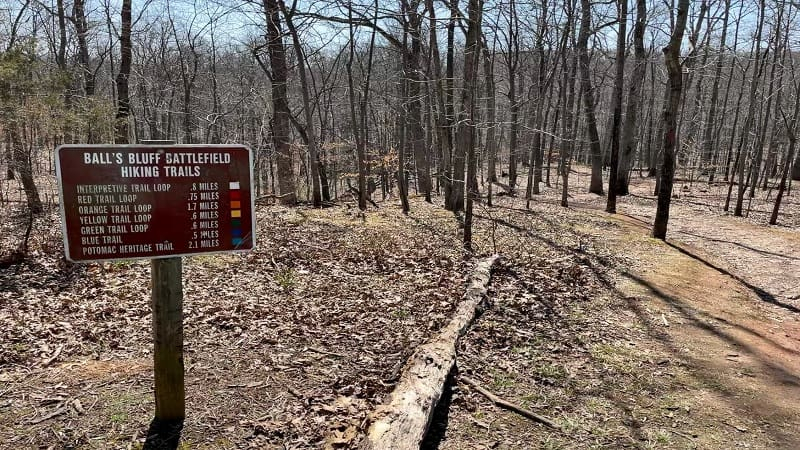
Source: armyhistory.org










